The Part 5 of ISO / IEC 19794-5 standard, which is mentioned in the recommendations of the ICAO ( International Civil Aviation Organization ) on the travel document, defined standard formats for digital images of faces in order to ensure Correct execution of the operations of:
- Human examination of facial images with sufficient resolution to allow an examiner to check for small features such as moles and scars that could be used to verify identity
- Human identity verification by comparison of people with facial images.
- Automated facial identification by computer (search 1: N)
- Automated face verification by computer (1: 1 match)
To enable many applications on a variety of devices, including devices that have the limited resources required for data storage, and to improve the accuracy of facial recognition, this International Standard specifies not only a data format, but also:
- Scene restrictions (pose, expression, etc.)
- Photographic properties (lighting, positioning, camera focus, etc.)
- Digital image attributes ( image resolution, image size, etc.)
ICAO completed the publication of the ISO standard in Document 9303, part 1, volume 1, examples of acceptable or unacceptable photographs for travel documents based on this standard. These recommendations are also used in several countries for the issuance of driver’s licenses or residence permits.
General information
Disclaimer: The present description is a simplified version of the standard and recommendations and does not claim to be exhaustive. The photograph shown below has been published by ICAO .
Photographs of travel documents should usually be recent (no more than 6 months). If they are sent in printed form, they must be on high quality paper with high resolution.
Summary of specifications
- Position of the subject and background.
- Attitude
- Quality of photography
- Colors and lighting
- Hairstyle and expression
- Illumination of the applicant and background.
- Eyeglasses
- Ornaments for the head
- Children
Position of the subject and background
The subject should not be near or far from the camera: the distance between the eyes should be a little less than 1/4 of the width of the image. The face should be centered both vertically and horizontally. The fund has to be uniform.
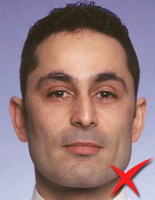
| 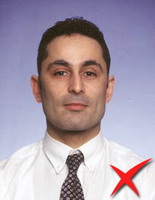
| 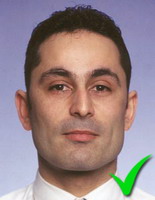
|
Too close | Too far | Right |
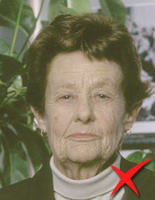
| 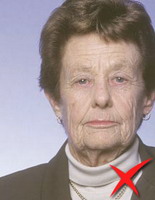
| 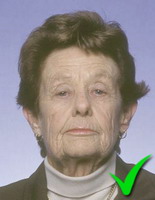
|
Non-uniform background | Face not centered | Right |
Posture
It must be shown to the applicant facing the camera, without looking over a shoulder (portrait style). The head must be upright, so that an imaginary horizontal line drawn between the centers of the eyes is parallel to the upper edge of the image.
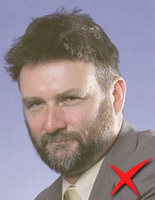
| 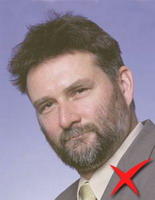
| 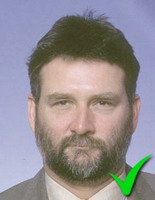
|
Portrait style | Slanted eyes | Right |
Quality of the photograph
The portrait must be well focused from the nose to the ears, of high quality, without wrinkles or ink marks. If it is colored, it should show skin tones naturally.
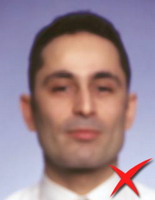
| 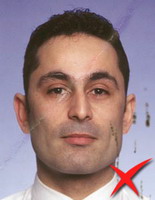
| 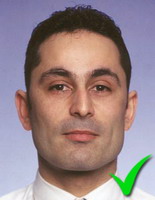
|
Blurry | Marked / wrinkled ink | Right |
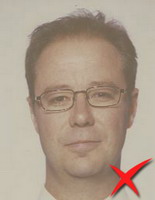
| 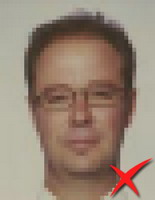
| 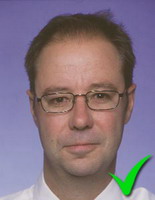
|
Washed color | Pixeled (low quality) | Right |
Colors and lighting
The portrait should be neutral in the applicant, with eyes open and clearly visible. Calibration of the exposure with white balance with a gray sample of 18%. Dynamic range of 128 levels in the face area is recommended. The ISO standard does not allow digital modification of the image to correct the dynamic range or colors.
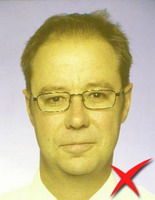
| 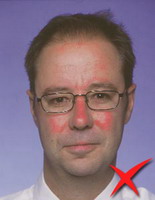
| 
|
Unnatural skin tones | Saturated colors | Right |
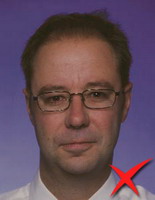
| 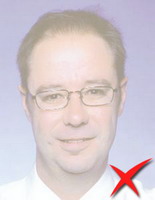
| 
|
Too dark | Too light | Right |
Hair and expression
No hair should hide large areas of the face or eyes. The applicant should look at the camera with a neutral expression and the month closed. A smile is allowed with the mouth closed.
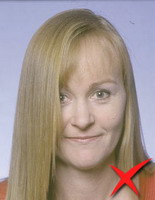
| 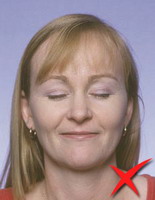
| 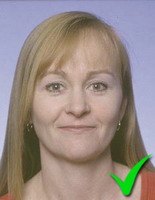
|
Occluded eye | Closed eyes | Right |
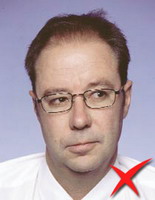
| 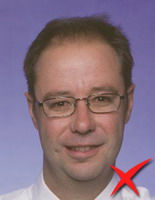
| 
|
Looking the other way | Open mouth | Right |
Applicant lighting and background
The lighting should be uniform, without shadows and without reflections on the face, without red eyes and the background should not present any noticeable shadow.
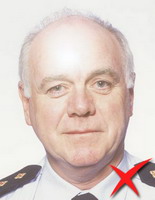
| 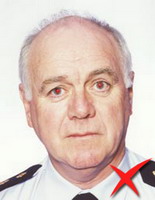
| 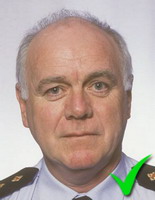
|
Glare on the face | Red eyes | Right |
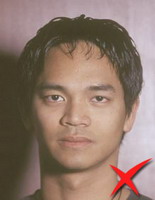
| 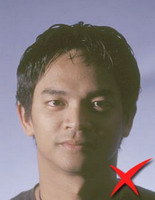
| 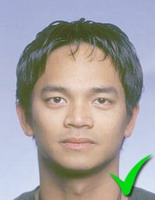
|
Shadow in the background | Shadow on the face | Right |
Glasses
The portrait should show the eyes without light reflections in the glasses and without tinted lenses. If possible, avoid heavy frames. The frames will not cover any part of the eyes.
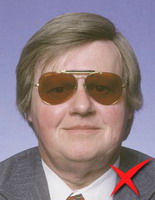
| 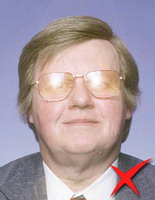
| 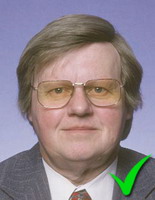
|
Dark colored glasses | Flash reflection on lenses | Right |
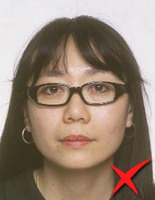
| 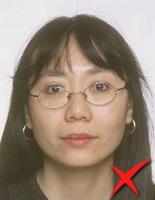
| 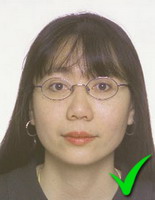
|
Heavy frames | Partially occluded eyes | Right |
Ornaments for the head
Items that cover the head will not be accepted, except in circumstances that the competent state authority specifically approves. Some circumstances may be religious, medical or cultural.
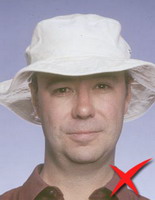
| 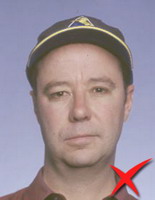
| 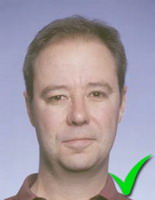
|
Not allowed | Not allowed | Right |
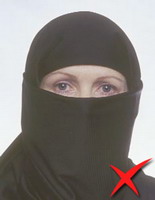
| 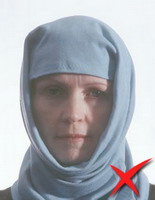
| 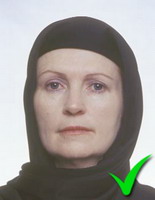
|
Covered face | Shadows on the entire face | Right |
Children
States can issue special recommendations for children. In some cases, a non-neutral expression and closed eyes may be acceptable. In any case, the child will be alone without other people, with backs of chairs or visible toys.
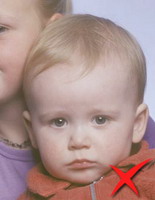
| 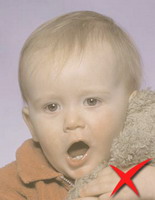
| 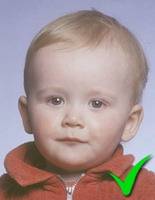
|
Shows another person | Toy too closed to the face. | Right |